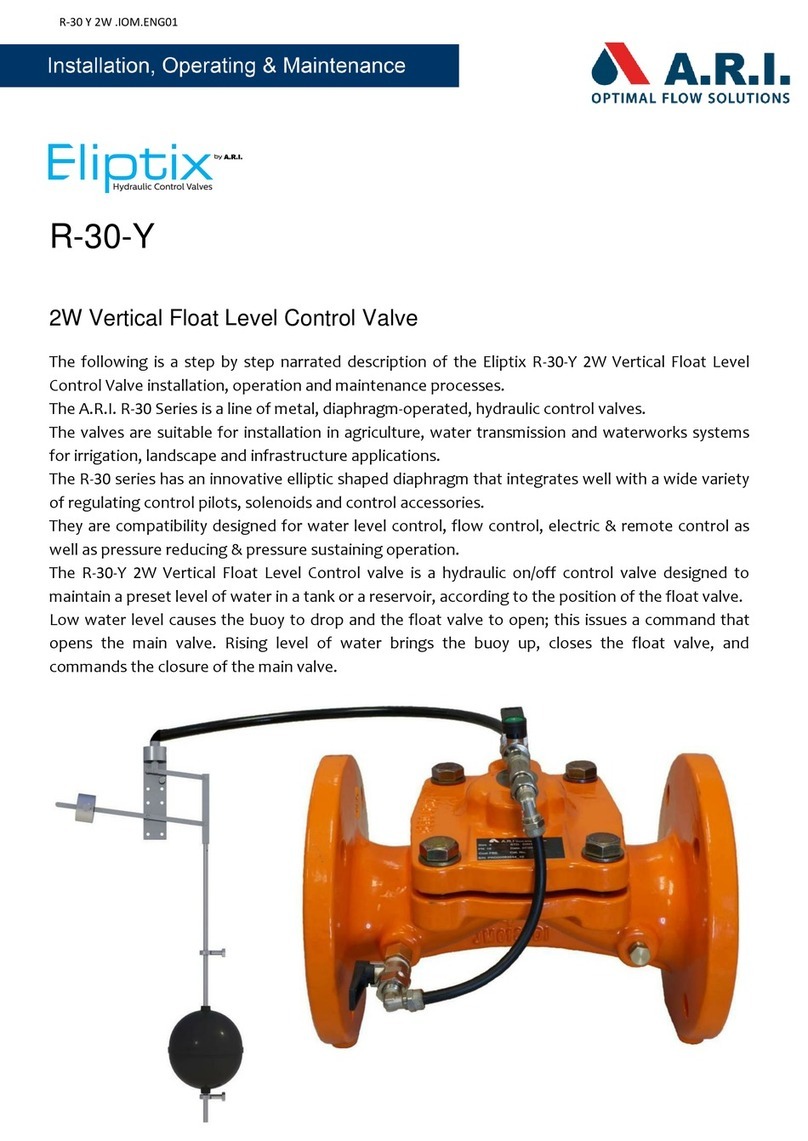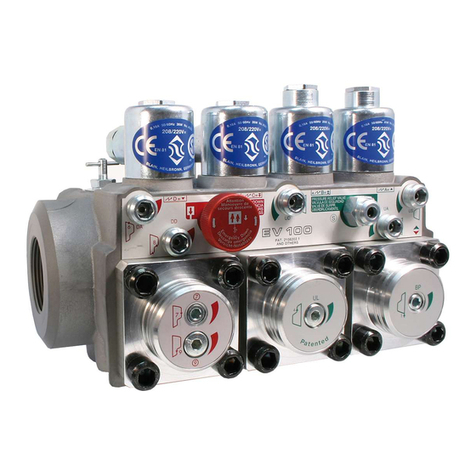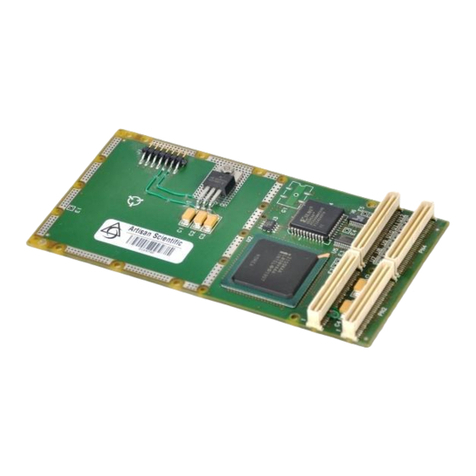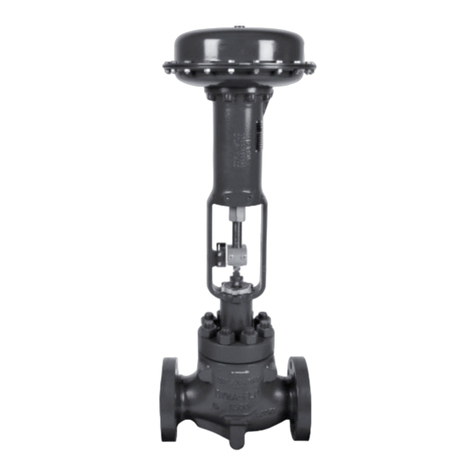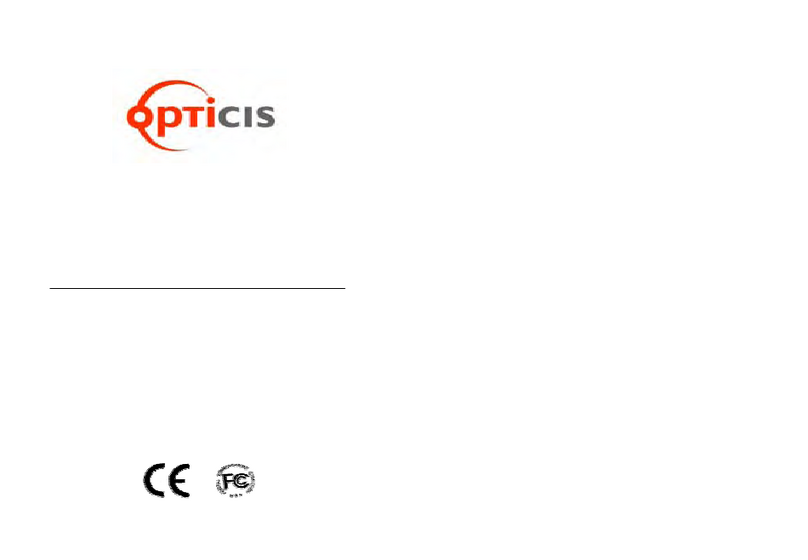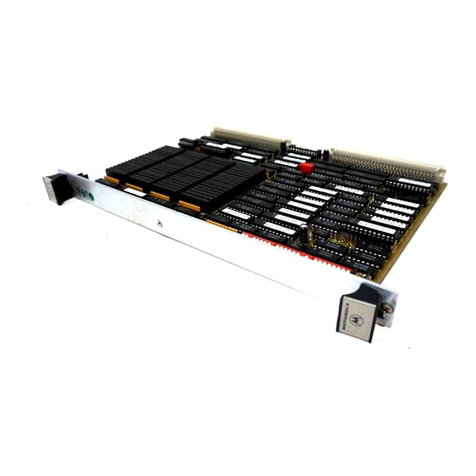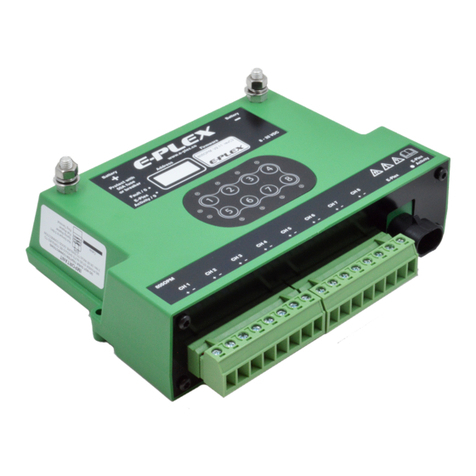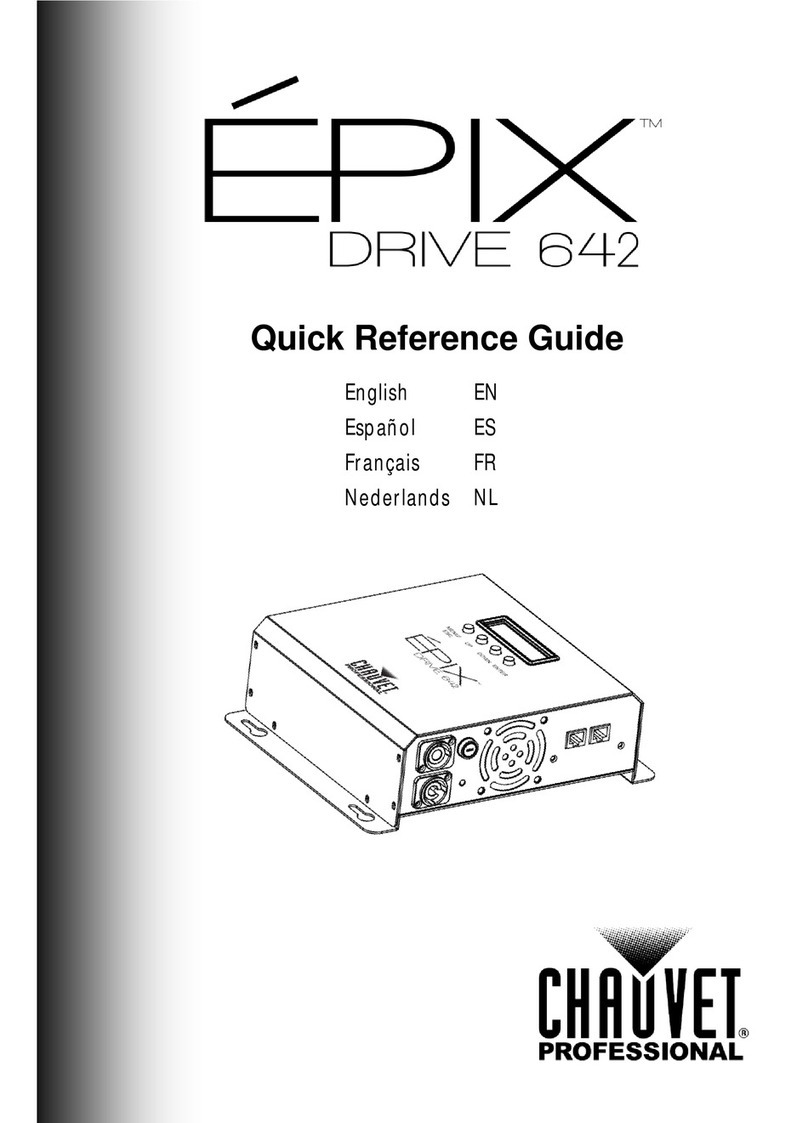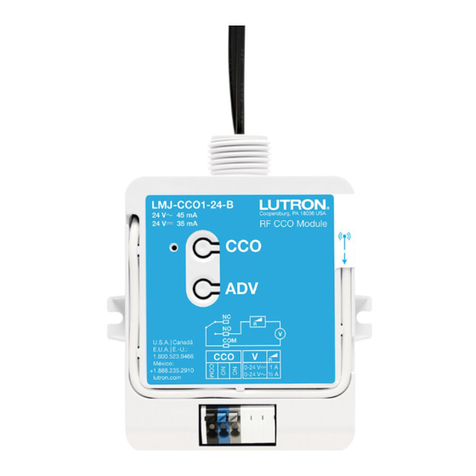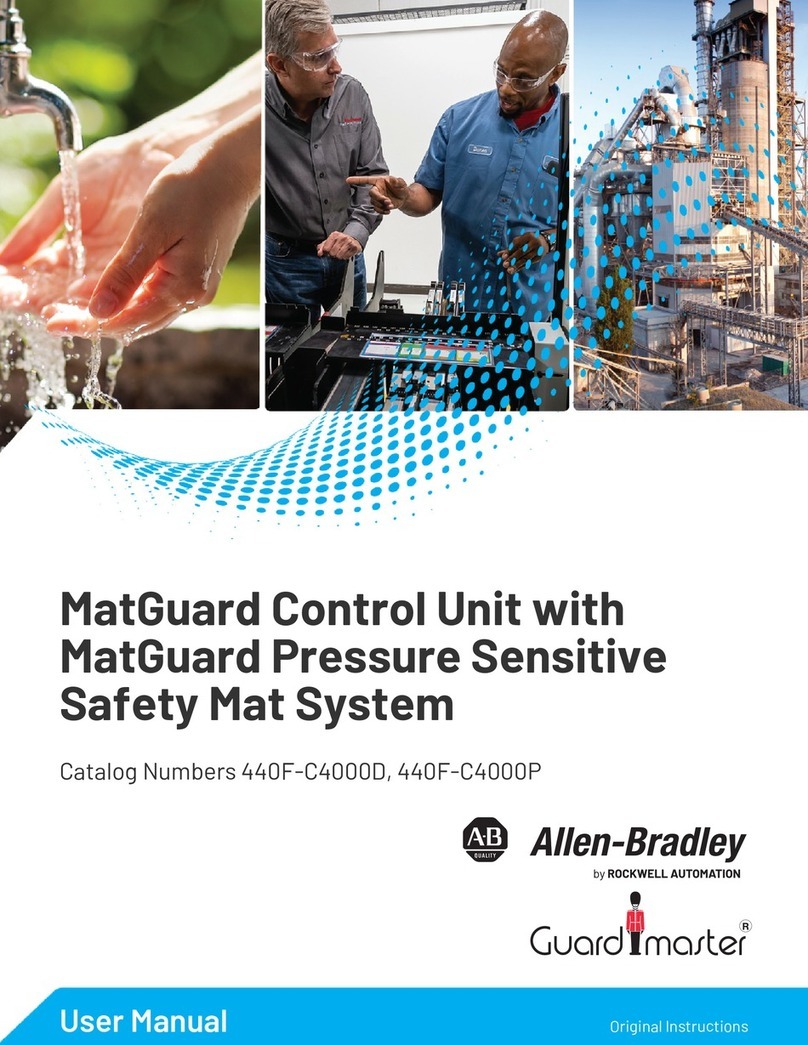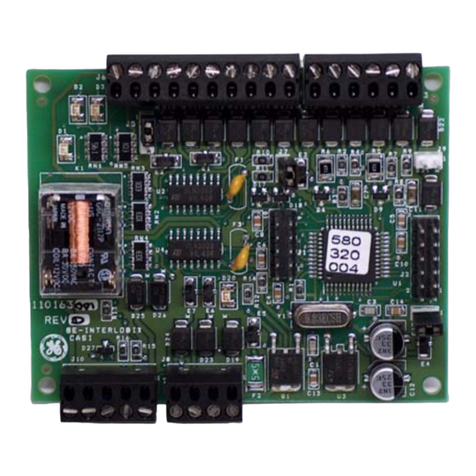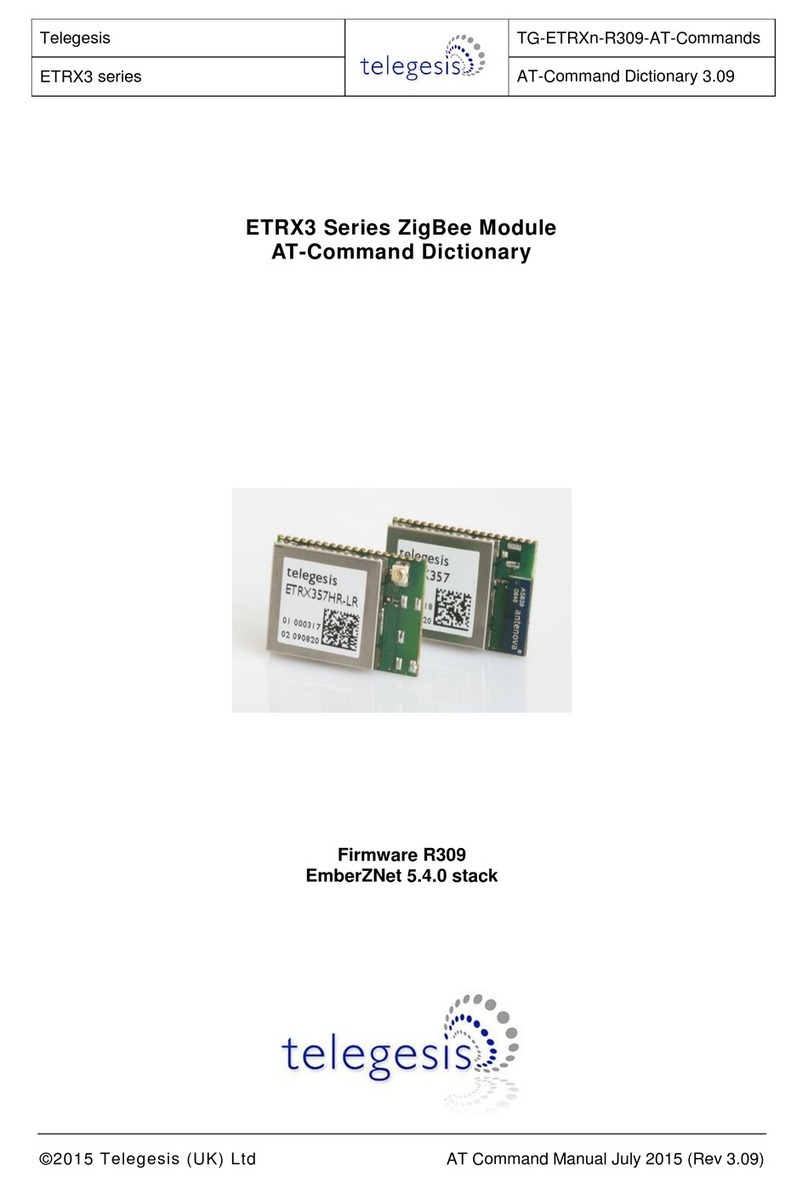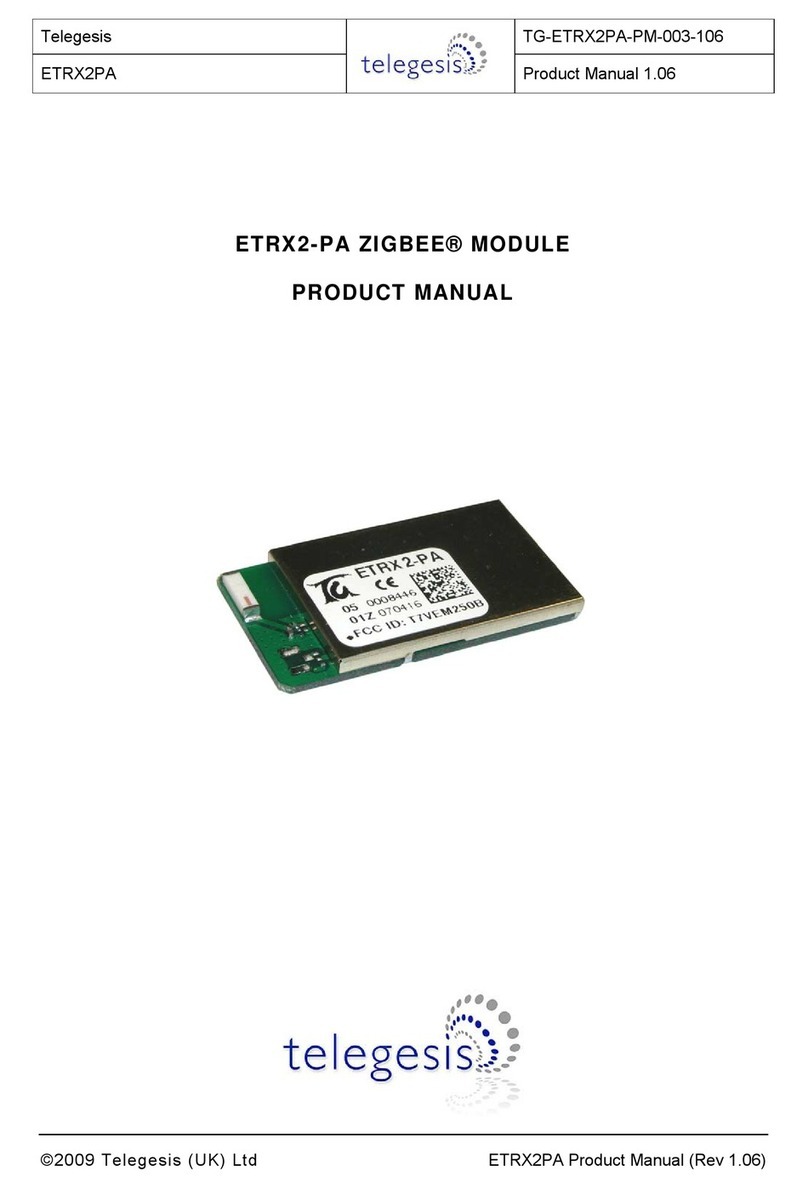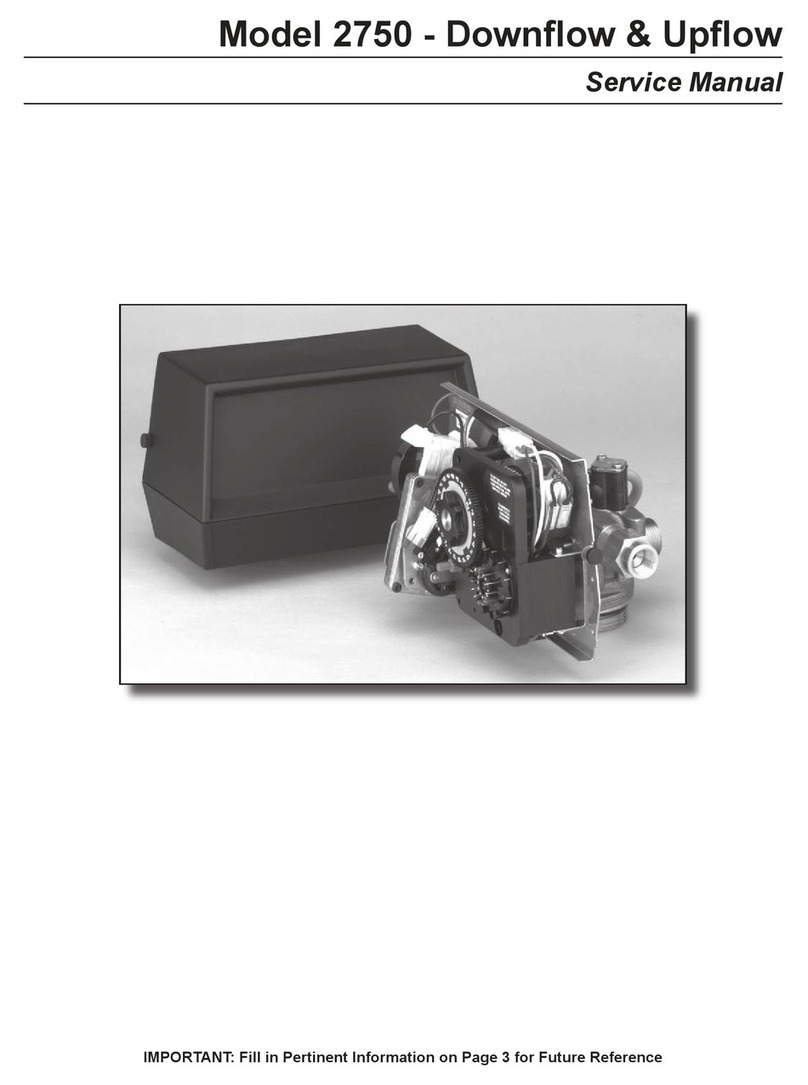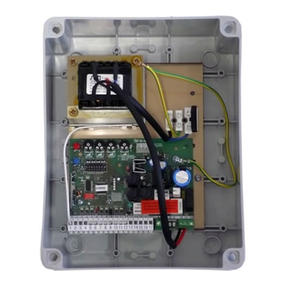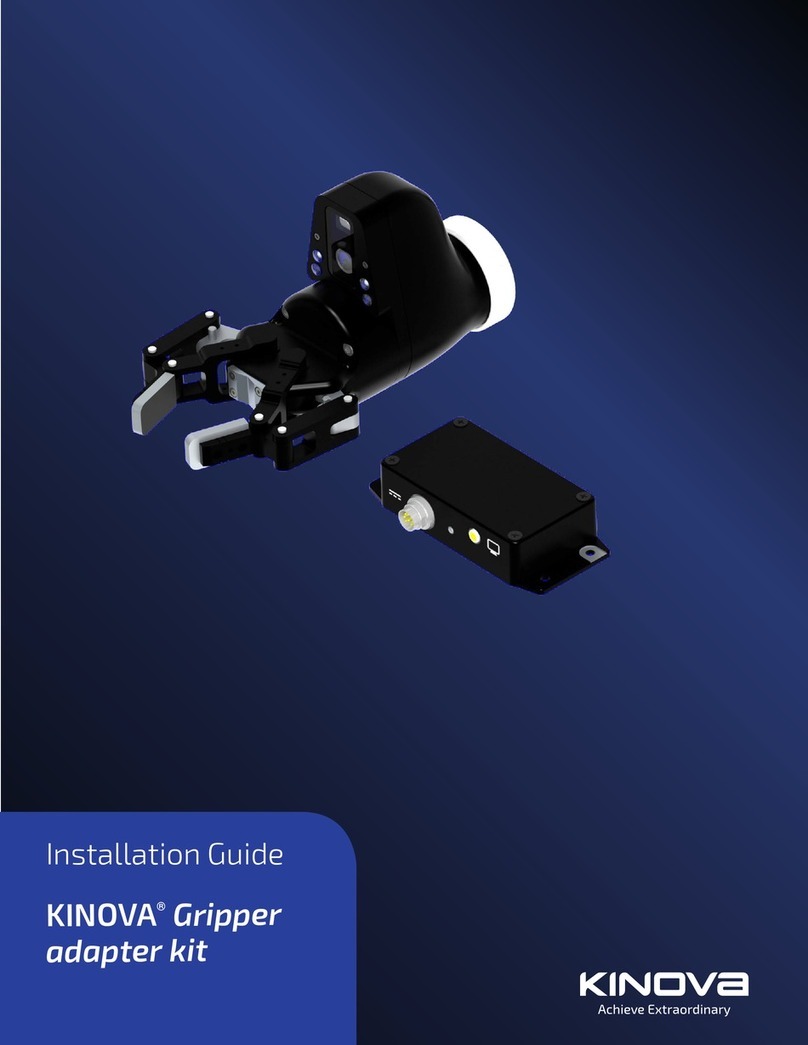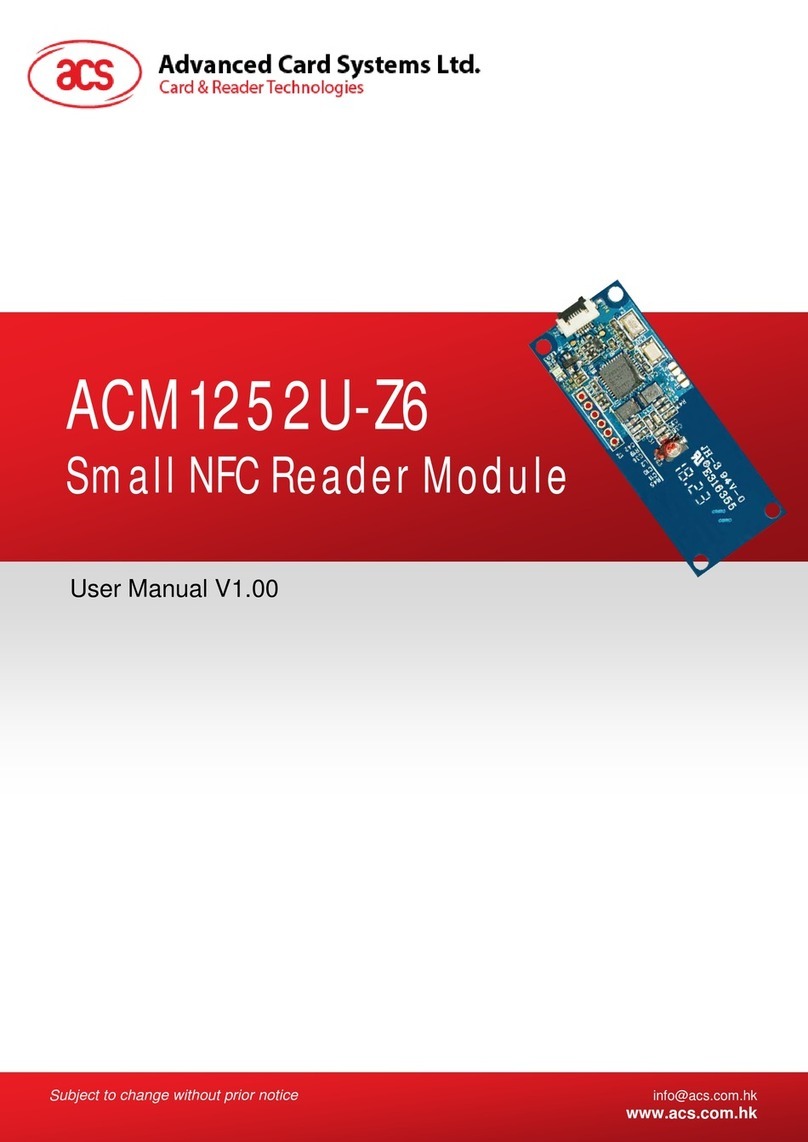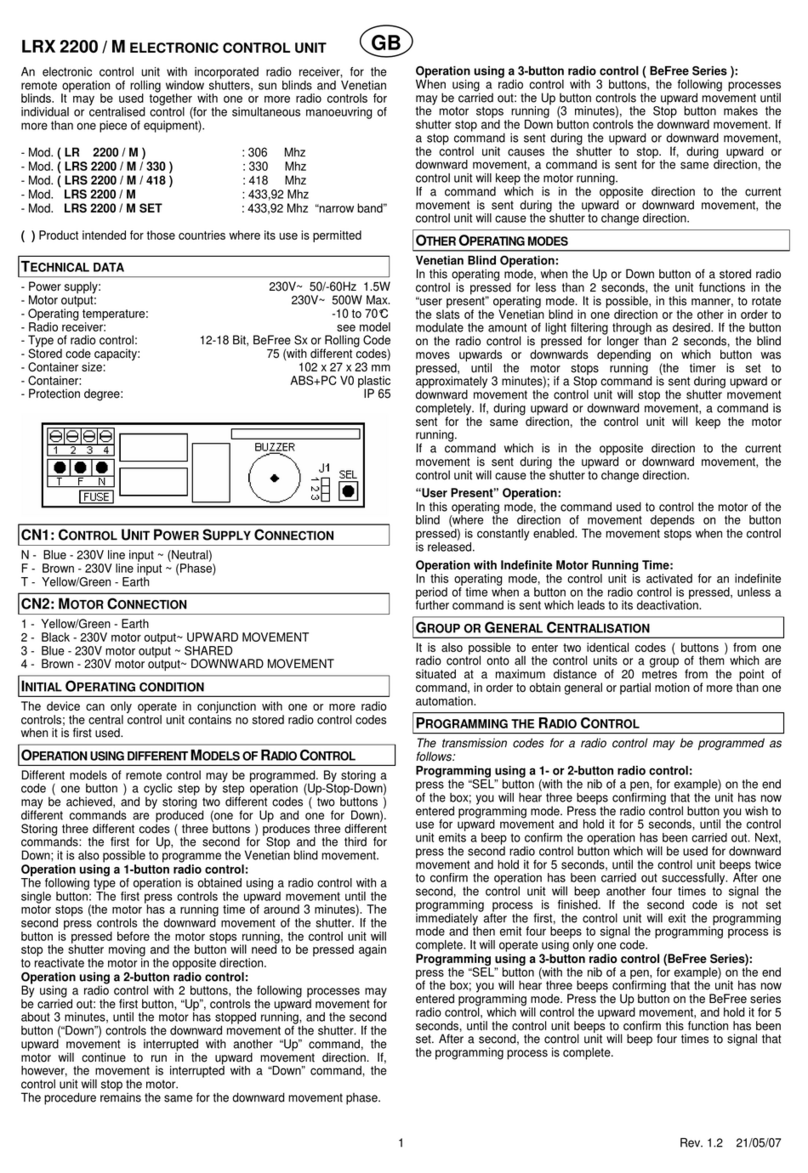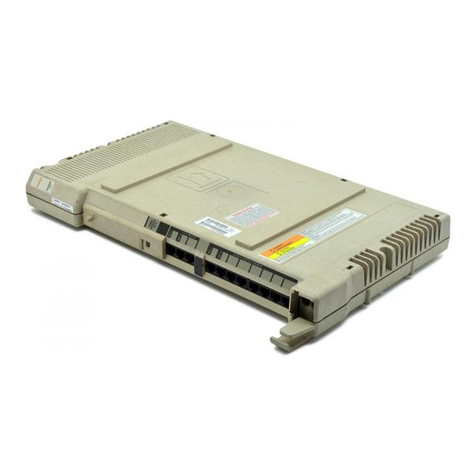
R305 AT Commands
©2011 Telegesis (UK) Ltd - 2 - AT Command Manual (Rev 3.05)
Table of Contents
1INTRODUCTION.................................................................................................................3
1.1 Document Overview.........................................................................................................3
1.2 Network topology .............................................................................................................4
1.3 A Note on ZigBee®Compliance .......................................................................................4
1.4 Important notes................................................................................................................4
1.4.1 Hardware compatibility.....................................................................................................4
1.4.2 Unexpected start-up in bootloader mode..........................................................................4
1.4.3 Compatibility with other devices.......................................................................................5
1.4.4 Persistence of network parameters..................................................................................5
2AT STYLE COMMAND CONVENTIONS............................................................................5
2.1 Parameters ......................................................................................................................6
2.2 Prompt Overview..............................................................................................................7
2.3 Device Overview..............................................................................................................9
2.3.1 ZigBee types....................................................................................................................9
2.3.2 Non-ZigBee types ............................................................................................................9
2.4 AT Command Overview.................................................................................................10
2.5 Module Control & Configuration Commands ..................................................................12
2.6 Network Control & Configuration Commands.................................................................18
2.7 Messaging......................................................................................................................33
3LIST OF ERROR CODES.................................................................................................46
4S-REGISTERS..................................................................................................................48
4.1 Recovery of the Factory Default Settings.......................................................................50
4.2 S-Registers for Network Setup.......................................................................................51
4.3 S-Registers for Module Setup ........................................................................................56
4.4 I/O related S-Registers...................................................................................................62
4.5 S-Registers Defining the Functionality of the Module .....................................................72
4.6 Advanced Settings.........................................................................................................85
5BUILD IN FUNCTIONALITY .............................................................................................93
6ETRX2 POWER CONSUMPTION.....................................................................................95
7ETRX357 POWER CONSUMPTION (PROVISIONAL DATA) ..........................................96
8NOTES ON ENERGY LEVELS AND LQI .........................................................................97
8.1 Interpreting LQI..............................................................................................................97
8.2 Interpreting RSSI Energy Levels....................................................................................98
9UPGRADING FROM R2XX TO R305 ON THE ETRX2 SERIES.......................................99
10 TRADEMARKS...............................................................................................................100
11 DISCLAIMER..................................................................................................................100
12 CONTACT INFORMATION.............................................................................................100
13 REFERENCES................................................................................................................100
14 APPENDIX A. FORMING A SECURE NETWORK ........................................................101




















